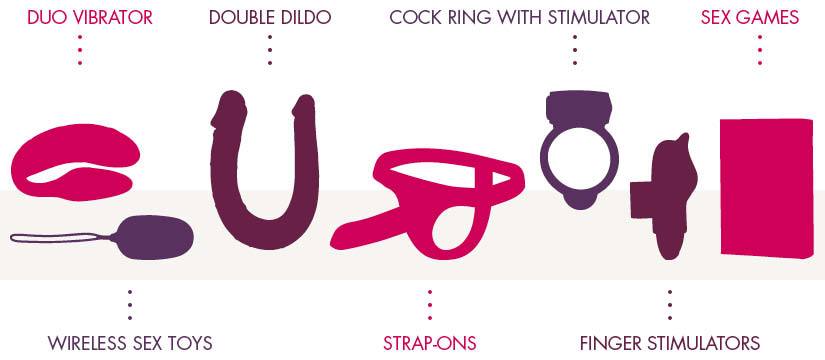When it comes to sexual exploration and spicing things up in the bedroom, the jockey sex position offers a unique blend of intimacy, novelty and control. Whether you’re curious about trying something that differs from the more commonly discussed positions or you’re looking for variations to inject energy into your private life, the jockey position can be a fun addition. In this article, we’ll cover exactly how it works, what makes it distinct, how to prepare, tips for comfort and pleasure, and even compare it to other adventurous positions (for example, see how it relates to the bumper cars sex position when you’re feeling playful). We’ll also provide FAQs so you’re fully equipped to explore confidently.

What is the Jockey Sex Position?
The jockey sex position is a somewhat less-common than the usual “missionary” or “woman-on-top” options, but it’s described in sources (for instance a survey noted it as “when the woman lies on her stomach and the guy enters her from behind”). Maxim In this setup:
- One partner (typically the receiving partner) lies face-down, prone on the bed or surface, possibly with a slight lift at the hips.
- The other partner (typically the penetrating partner) kneels or crouches behind, aligning themselves for rear-entry.
- The key difference from a standard doggy style or from lying on elbows is the flat stomach position of the receiver, offering a different angle of penetration, different sensations and a variation on how much contact or control the receiving partner has.
Because it changes the angle, the feel and the dynamic of who is more “in control,” many couples find it a refreshing variation.
Why Try the Jockey Position?
There are several reasons someone might want to add the jockey position to their sexual repertoire:
- New Angle, New Sensation: Changing position changes the angle of penetration, which can stimulate different surfaces and erogenous zones, potentially creating fresh feelings.
- Control & Submission: If your dynamic involves play around who leads and who follows in sexual movement, the jockey position offers a mix of both: one partner supports the other while the other leads movement from behind.
- Body Contact & Warmth: The prone position means full stomach contact with the surface and less eye contact, which may feel either more intimate or more “in the moment” for some couples.
- Variation for Routine: Many people over time fall into predictable sexual habits. Introducing a less-common position like jockey adds novelty, which can enhance excitement and connection.
- Ease for Some Bodies: For some people the jockey position may be less strenuous than more upright positions, especially if the base partner lies flat and relaxes rather than needing to support themselves heavily.
How to Do the Jockey Position Step-by-Step
Here’s a simple step-by-step guide to trying out the jockey position:
- Set the mood: Make sure you have a comfortable surface (bed, mattress, soft floor) and enough space behind the receiving partner.
- Receiver lies face‐down: The partner who will receive the penetration lies on their stomach, legs either straight or slightly parted, arms positioned comfortably (e.g., lying to the side or under the head).
- Optional hip lift: To increase access and change angle, the receiver may place a pillow under their hips or ask the partner behind to lift their hips slightly.
- Penetrating partner positions behind: The other partner kneels or crouches behind the receiver, aligning their hips with the receiver’s hips so penetration is comfortable and controlled.
- Entrance and pace: With lubrication if needed, the penetrating partner gently enters, starting slowly to ensure comfort and good alignment. The receiver may adjust their legs, hips or muscles to find a comfortable angle.
- Communication: As always, check in: does the angle feel good? Are there pressure spots? Are adjustments needed?
- Movement & rhythm: The penetrating partner can control thrusts (depth and pace) while the receiving partner can subtly shift hips, wiggle legs or change leg separation to add or reduce sensation.
- Finish & adjust: After climax or as comfortable, you may transition into another position (like spooning) or rest. It’s fine to shift mid-act if it becomes uncomfortable or you want to change.
Variations and Adjustments of the Jockey Position
Here are a few useful variations and tweaks to tailor the jockey position to your preferences:
- Hip pillow variation: Place a pillow under the receiver’s hips to raise the pelvis slightly. This increases angle and may enhance contact with the front wall of the vagina (for vaginal sex) or offer different sensation.
- Arm support variation: The receiver may rest on forearms instead of lying fully flat, giving a slight chest lift. This can reduce pressure on the torso and allow more movement.
- Leg spread variation: The receiver can part the legs more widely, or bend the knees upward (bringing heels toward buttocks). Changing leg position alters stimulation.
- Reverse variant: The penetrating partner may lie flat while the receiver lies face‐down and the penetrator enters from behind while lying, so both are flat; this changes depth and contact.
- Standing variation: If space allows, the receiver could bend forward over a surface while the penetrating partner stands behind — though safety, comfort and height difference must be managed.
- Toy or hand stimulation addition: The receiver can use a toy (e.g. for clitoral stimulation) or the penetrating partner can add manual stimulation of other erogenous zones.
- From the jockey to another position: After some time, the couple may shift into a “cowgirl” or “doggy” style from the same position, offering fluid movement rather than pause.
Key Benefits of the Jockey Position
Here are some of the benefits many couples report when trying the jockey position:
- Enhanced angle for depth: Because the receiver lies flat and the penetrator is behind, penetration may feel deeper or different than other positions.
- Full connection with surface: The receiving partner’s torso rests on a surface; some people like the grounded feeling and security.
- Hands free / comfortable arms: For some, lying face‐down allows arms to rest at sides or under head rather than supporting weight.
- Variation from standard rear entry: While doggy style is more lifted, more dynamic, the jockey position is more controlled, slower, subtle — ideal for couples wanting a different rhythm.
- Encourages one partner’s dominant movement, the other’s receptive presence: This can appeal in relationships exploring slight power exchange or role shifts.
- Low-equipment friendly: No furniture needed, minimal repositioning. Makes it accessible for spontaneous intimacy.
Things to Consider / Safety & Comfort Tips
As with any new sex position, there are practical things to keep in mind for comfort and safety:
- Pelvis and back strain: If the receiver’s stomach is pressed into the mattress too firmly, it may cause discomfort or restrict breathing; using pillows or adjusting position helps.
- Penetrator’s knee/leg strain: The penetrating partner should ensure they are comfortable kneeling or crouching; using a padded surface or getting on a bed helps.
- Lubrication: Given the possibly different angle, adding more lubricant than usual may enhance comfort.
- Communication: Always check in; sometimes the angle might lead to pressure on joints or awkward reach. Adjust if needed.
- Height or size differences: These may affect alignment; pillows or height adjustment may help both partners align comfortably.
- Transition ease: Because the receiver is prone, transitioning out might require both partners to pause and reposition—so build in comfort time.
- Not ideal for certain conditions: If either partner has lower back pain, hip issues or torso sensitivity lying face-down might be tricky; choose a variation or alternate position.
- Privacy & cleanliness: Lying prone means you’re closer to the surface—so using a clean sheet, towel or designated play space is wise.
When to Use the Jockey Position
The jockey position is versatile, but some scenarios make it especially suitable:
- After foreplay buildup: When energy is high and you want to switch things up without major repositioning.
- If you want a slower, more controlled rhythm: Because the receiver is less mobile, the penetrator can lead the pace, which may suit a more relaxed yet intense experience.
- For body contact and grounded sensation: If you want to feel more ‘connected’ with the surface and each other, rather than elevated or moved around.
- If other positions feel repetitive: Bring the jockey into rotation when you notice your sexual flow has become predictable.
- During a long session: Because the receiver’s arms and torso are relaxed, this position can serve as a comfortable middle stage rather than high-motion.
- If the couple is exploring power dynamics: The receiver’s passive lying position vs. the active kneeling partner can reflect a playful dominance/receptivity dynamic.
Comparison: Jockey vs. Other Positions
Understanding how the jockey position compares to similar positions can help choose when and how to use it:
- Jockey vs. Doggy Style: Both are rear-entry, but in doggy style the receiver is on hands and knees, elevated, often with more motion and less full-body contact. The jockey position is flatter, slower, more grounded.
- Jockey vs. Cowgirl (Woman on Top): Cowgirl gives the receiving partner maximum control; jockey gives more control to the penetrating partner, with the receiver more receptive. For those who like switching roles, that contrast can be exciting. Wikipedia
- Jockey vs. Spooning: Spooning is side-by-side lying, which is very intimate and relaxed. Jockey is face-down and behind, which may feel less intimate in eye contact but more intense in sensation and angle.
- Jockey vs. Standing / Furniture Assisted Positions: The latter may be more dynamic, require more strength or support. Jockey is simpler, accessible, and requires minimal props.
Incorporating Toys & Extras
You can elevate the jockey position by integrating accessories or toys:
- Use a vibrator on the receiver’s clitoral area while penetration occurs from behind.
- Add a butt plug for anal stimulation if comfortable and consensual—especially since the flat prone position may simplify insertion or hold.
- Employ blindfolds or sensory play to shift focus from visuals to sensation — the face-down position pairs nicely with sensory reduction.
- Use massage oil and treat the initial contact phase as full-body exploration before shifting into penetration.
- Consider switching to another position during the session (e.g., roll into the jockey for a while, then transition into a playful position like the bumper cars position mentioned above).
- Use pillows or wedges to elevate hips or open the receiving partner’s leg position for variation.
How to Know If the Jockey Position Is Right for You
Here are signs it’s working — and signs you may want to adjust or switch:
Signs it’s working:
- Both partners feel comfortable and engaged in the angle.
- The receiver can relax into the surface rather than tensing to adjust.
- Penetration feels satisfying, not strained or mis-aligned.
- Both partners are aware of each other’s responses (moans, movements) and can adjust rhythm accordingly.
- You finish feeling connected and perhaps excited to explore more.
Signs to adjust or switch:
- The receiver feels torque or pressure in hips/back.
- The penetrator feels awkward kneeling, unable to maintain rhythm.
- Sensation feels numbed or too deep for comfort.
- Communication drops off because either partner is uncomfortable or distracted.
- You both feel more like you’re “doing a position” than experiencing connection — if that happens, switch to something more intuitive.
Making the Jockey Position Part of Your Repertoire
To incorporate this position into your sexual life meaningfully:
- Discuss ahead of time: What are you hoping to feel? What pace? Any boundaries?
- Add it to rotation: Make a list of “positions to try” or “positions to revisit” — include jockey.
- Use it as transition or main: It doesn’t have to be the centrepiece; you might switch into it or out of it depending on mood.
- Reflect after: Talk afterward about what you liked or didn’t like — angle, pace, contact, comfort.
- Alternate roles: Maybe the receiver becomes penetrator in another position; keep the flow fresh.
- Build a mood playlist: As with other positions, ambiance matters — music, lighting, comfort, temperature.
- Respect energy levels: Because the receiver lies prone (which some may find restful, others may find limiting), this position might work better mid-session than at the very start or finish.
Final Thoughts on the Jockey Sex Position
The jockey sex position offers an intriguing variation that is equal parts grounded and erotic. It gives one partner a receptive role with full-body contact while the other takes a leading, kneeling position behind — a shift from many standard positions. Because it changes angle and control dynamics, it can refresh a sexual routine, deepen connection and introduce new sensations.
If you’ve been wanting to explore different angles or gear up for adventurous yet comfortable intimacy, this could be a strong choice. Just ensure communication, lubrication, comfort and willingness are present. And remember — a position is just a vehicle; the best sex often comes from responsiveness, fun and presence, not perfection.
FAQ
Q1: Is the jockey sex position good for beginners?
Yes — it can be. Because the receiver is lying flat, there’s less need for balancing, more surface support and potentially less fatigue. That said, orientation and comfort matter, so start slow and adjust.
Q2: Does it work for anal sex too?
Yes, with proper preparation. The angle of rear-entry in the jockey position can make anal penetration easier for some couples, as the receiver’s stomach rests on the surface and hips can be adjusted. As always, use lubrication and communicate.
Q3: What if one partner has back or hip pain?
The prone position might cause discomfort for some. Using pillows under the hips, reducing time in the position, or choosing a more supported variation may help. Always prioritize comfort.
Q4: How can we change intensity in this position?
You can vary depth and pace of penetration, adjust hip elevation with pillows, alter leg spread, change the receiving partner’s arm position (relaxed vs bracing), add a toy or stimulation, or move into a faster or slower rhythm depending on energy.
Q5: Are there any props needed for jockey?
No special props are required beyond a comfortable surface and maybe a pillow for hip support. But you can incorporate pillows, wedges or extra cushions if helpful.
Q6: Can this position accommodate pregnant partners?
Possibly, depending on how far along and physical comfort. The flat-on-stomach setup may become uncomfortable later in pregnancy. Adjusting with extra pillows or switching to side-lying or seated versions may be more comfortable.
Q7: How do we transition into or out of this position smoothly?
To transition in: move from a kneeling or spooning position into the receiver lying face-down, and the penetrator repositioning behind. To transition out: slow pace, signal intention, and shift into spooning, cowgirl or another lying position so you don’t jolt out of it abruptly.
Q8: Is eye contact or intimacy compromised?
Potentially, because the receiver is face-down. If eye contact is important to you, you might glance back or switch to a position that allows face-to-face later. However, the loss of eye contact can also create a different, immersive sensation that some couples appreciate.
Q9: How often should we rotate new positions like jockey into our sex life?
There’s no set rule — the goal is satisfaction and novelty, not quantity. You might aim for one or two new positions per month, or simply adapt when routine sets in. The key is flexibility and enjoyment.



![Most Powerful Bullet & Mini Vibrators [Tested in 2025]](https://couplepleasure.com/wp-content/uploads/2025/10/image-11-2.jpeg)
